Abstract
The prognosis of hexacarbon induced polyneuropathy is usually good, though its clinical course after the cessation of exposure has not been described in detail. Eleven patients with moderate to severe n-hexane induced polyneuropathy due to occupational exposure were regularly followed up for a period of four years at the neurological department of the National Taiwan University Hospital. Sensorimotor neuropathy was diagnosed in nine patients and motor neuropathy in two. All were removed from further exposure to n-hexane after aetiological confirmation, but motor disturbance continued to worsen in five cases. Sensory functions were regained earlier than motor functions. All the patients, including one who was tetraplegic and confined to a wheelchair in the early stages, regained their full motor capabilities within one to four years. Three patients with severe neuropathy had residual muscle atrophy in the intrinsic foot and hand muscles. Signs of damage to the central nervous system, including increased tendon reflexes in two patients and leg tightness in six patients, emerged as muscle power was nearing complete recovery. The tightness of the legs gradually disappeared, but muscle cramps of the calves developed and these were still present at the end of follow up. Two patients had mild abnormal colour vision, and the abnormality was still detectable four years later. It is concluded that n-hexane induced neuropathy has a good prognosis, and that spasticity due to damage to the central nervous system is functionally reversible; muscle cramps and dyschromatopsia persist much longer.
Full text
PDF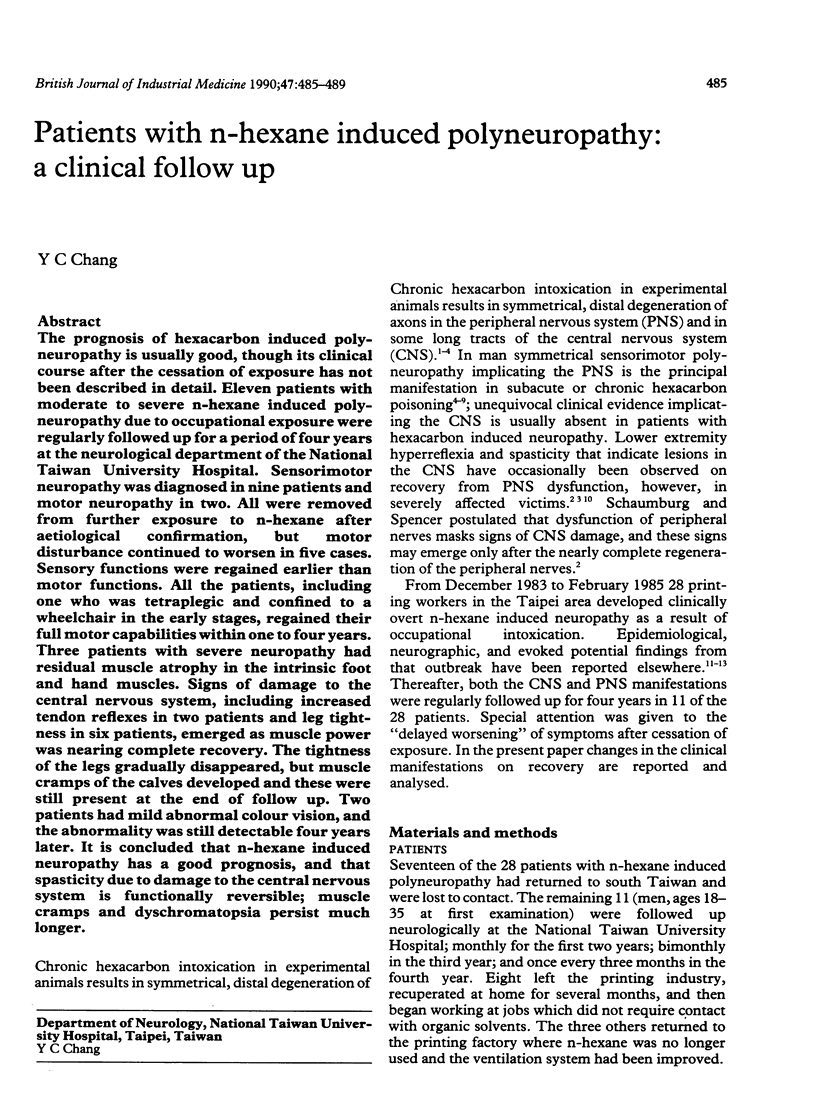
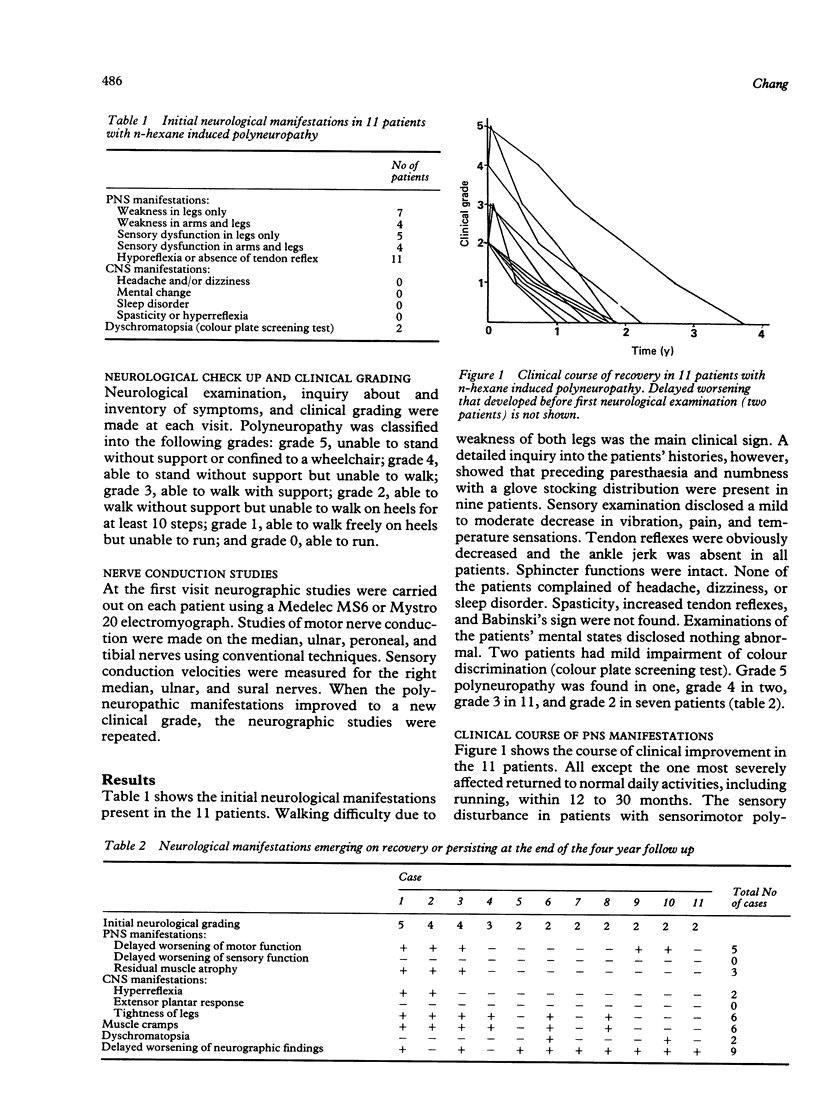
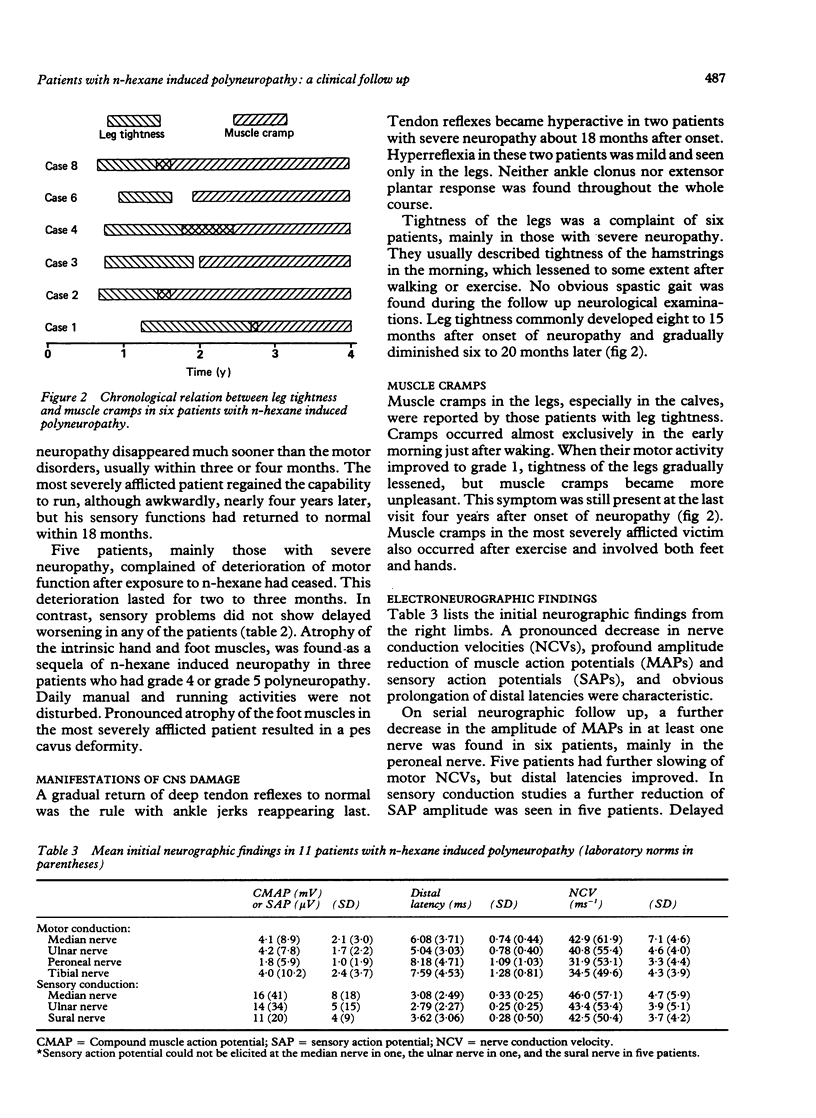
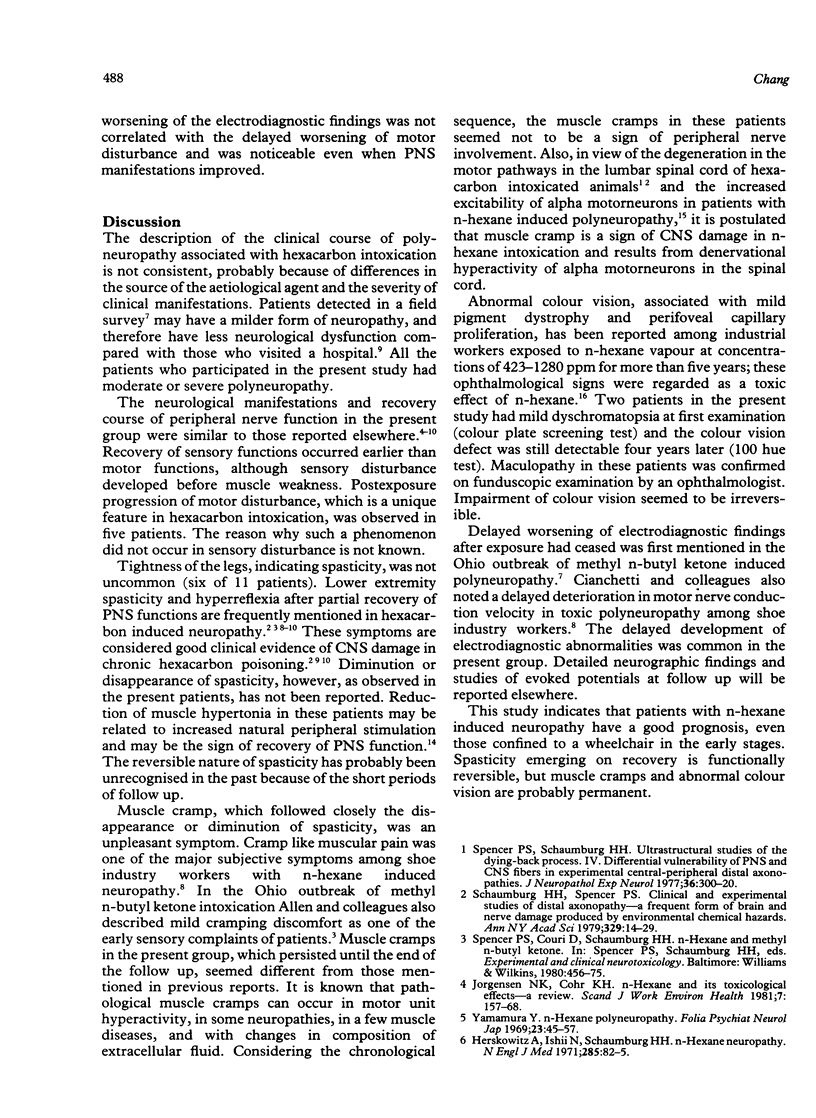
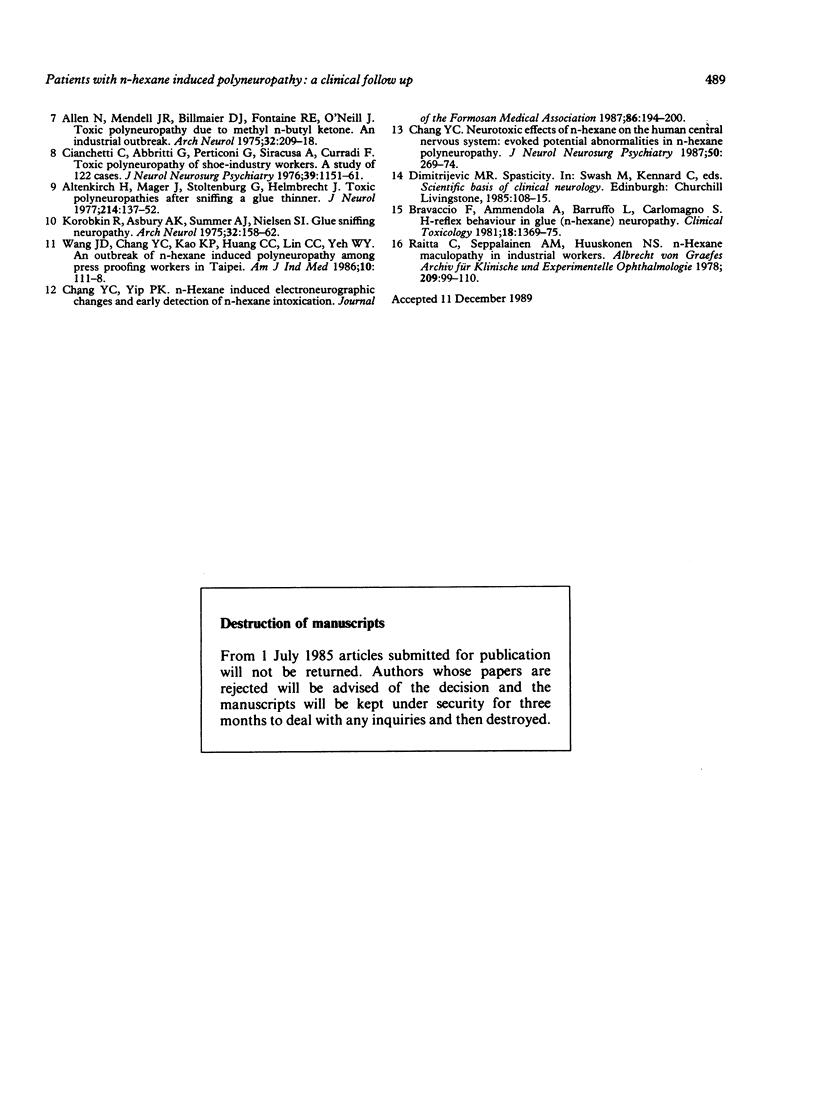
Selected References
These references are in PubMed. This may not be the complete list of references from this article.
- Allen N., Mendell J. R., Billmaier D. J., Fontaine R. E., O'Neill J. Toxic polyneuropathy due to methyl n-butyl ketone. An industrial outbreak. Arch Neurol. 1975 Apr;32(4):209–218. doi: 10.1001/archneur.1975.00490460025001. [DOI] [PubMed] [Google Scholar]
- Altenkirch H., Mager J., Stoltenburg G., Helmbrecht J. Toxic polyneuropathies after sniffing a glue thinner. J Neurol. 1977 Jan 13;214(2):137–152. doi: 10.1007/BF02430351. [DOI] [PubMed] [Google Scholar]
- Bravaccio F., Ammendola A., Barruffo L., Carlomagno S. H-reflex behavior in glue (n-hexane) neuropathy. Clin Toxicol. 1981 Dec;18(12):1369–1375. doi: 10.3109/15563658108990345. [DOI] [PubMed] [Google Scholar]
- Chang Y. C. Neurotoxic effects of n-hexane on the human central nervous system: evoked potential abnormalities in n-hexane polyneuropathy. J Neurol Neurosurg Psychiatry. 1987 Mar;50(3):269–274. doi: 10.1136/jnnp.50.3.269. [DOI] [PMC free article] [PubMed] [Google Scholar]
- Chang Y. C., Yip P. K. N-hexane-induced electroneurographic changes and early detection of N-hexane intoxication. Taiwan Yi Xue Hui Za Zhi. 1987 Feb;86(2):194–200. [PubMed] [Google Scholar]
- Cianchetti C., Abbritti G., Perticoni G., Siracusa A., Curradi F. Toxic polyneuropathy of shoe-industry workers. A study of 122 cases. J Neurol Neurosurg Psychiatry. 1976 Dec;39(12):1151–1161. doi: 10.1136/jnnp.39.12.1151. [DOI] [PMC free article] [PubMed] [Google Scholar]
- Korobkin R., Asbury A. K., Sumner A. J., Nielsen S. L. Glue-sniffing neuropathy. Arch Neurol. 1975 Mar;32(3):158–162. doi: 10.1001/archneur.1975.00490450038004. [DOI] [PubMed] [Google Scholar]
- Spencer P. S., Schaumburg H. H. Ultrastructural studies of the dying-back process. IV. Differential vulnerability of PNS and CNS fibers in experimental central-peripheral distal axonopathies. J Neuropathol Exp Neurol. 1977 Mar-Apr;36(2):300–320. doi: 10.1097/00005072-197703000-00006. [DOI] [PubMed] [Google Scholar]
- Wang J. D., Chang Y. C., Kao K. P., Huang C. C., Lin C. C., Yeh W. Y. An outbreak of N-hexane induced polyneuropathy among press proofing workers in Taipei. Am J Ind Med. 1986;10(2):111–118. doi: 10.1002/ajim.4700100202. [DOI] [PubMed] [Google Scholar]
- Yamamura Y. n-Hexane polyneuropathy. Folia Psychiatr Neurol Jpn. 1969;23(1):45–57. doi: 10.1111/j.1440-1819.1969.tb01441.x. [DOI] [PubMed] [Google Scholar]


